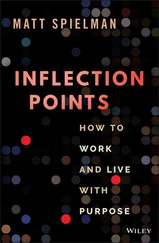I spent the next weekend, September 13 and 14, managing the government’s response to Hurricane Ike. The storm pounded Texas’s Gulf Coast early Saturday morning. The 110-mile-per-hour winds and 20-foot storm surge flooded Galveston, blew out windows in Houston, and killed more than 100 people. The worst storm to hit Texas since the Galveston Hurricane of 1900, Ike inflicted more than $24 billion in damage.
That same weekend, a different kind of storm was battering New York City. Like many institutions on Wall Street, Lehman Brothers was heavily leveraged and highly exposed to the faltering housing market. On September 10 the firm had announced its worst-ever financial loss, $3.9 billion in a single quarter. Confidence in Lehman vanished. Short-sellers, traders seeking to profit from declining stock prices, had helped drive Lehman stock from $16.20 to $3.65 per share. There was no way the firm could survive the weekend.
The question was what role, if any, the government should play in keeping Lehman afloat. The best possible solution was to find a buyer for Lehman, as we had for Bear Stearns. We had two days.
Hank flew to New York to oversee negotiations. He told me there were two possible buyers: Bank of America and Barclays, a British bank. Neither firm was willing to take Lehman’s problematic assets. Hank and Tim Geithner devised a way to structure a deal without committing taxpayer dollars. They convinced major Wall Street CEOs to contribute to a fund that would absorb Lehman’s toxic assets. Essentially, Lehman’s rivals would save the firm from bankruptcy. Hank was hopeful that one of the buyers would close a deal.
It soon became clear that Bank of America had its eyes on another purchase, Merrill Lynch. That left Barclays as Lehman’s last hope. But on Sunday, less than twelve hours before the Asian markets opened for Monday trading, financial regulators in London informed the Fed and SEC they were unwilling to approve a purchase by the British bank.
“What the hell is going on?” I asked Hank. “I thought we were going to get a deal.”
“The British aren’t prepared to approve,” he said.
While Hank and I spoke all the time, those phone calls on Sunday—the supposed day of rest—always seemed to be the worst. It felt like we were having the same conversation again and again. The only thing changing was the name of the failing firms. But this time, we weren’t going to be able to stop the domino from toppling over.
“Will we be able to explain why Lehman is different from Bear Stearns?” I asked Hank.
“Without JPMorgan as a buyer for Bear, it would have failed. We just couldn’t find a buyer for Lehman,” he said.
I felt we had done the best we could. But time had run out for Lehman. The 158-year-old investment house filed for bankruptcy just after midnight on Monday, September 15.

All hell broke loose in the morning. Legislators praised our decision not to intervene. The Washington Post editorialized, “The U.S. government was right to let Lehman tank.” The stock market was not so positive. The Dow Jones plunged more than five hundred points.
A panic mentality set in. Investors started selling off securities and buying Treasury bills and gold. Clients pulled their accounts from investment banks. The credit markets tightened as lenders held on to their cash. The gears of the financial system, which depend on liquidity to serve as the grease, were grinding to a halt.
As if that weren’t enough, the American International Group, a giant insurance company, was facing its own crisis. AIG wrote property and life insurance policies and insured municipalities, pension funds, 401(k)s, and other investment vehicles that affected everyday Americans. All those businesses were healthy. Yet the firm was somehow on the brink of implosion.
“How did this happen?” I asked Hank.
The answer was that one unit of the firm, AIG Financial Products, had insured large amounts of mortgage-backed obligations—and invested in even more. With mortgages defaulting in record numbers, the firm was facing cash calls for at least $85 billion that it did not have. If the company didn’t come up with the money immediately, it would not only fail, it would bring down major financial institutions and international investors with it.
The New York Fed had tried to line up a private-sector solution. But no bank could raise the kind of money AIG needed in such little time. There was only one way to keep the firm alive: The federal government would have to step in. Ben Bernanke reported that AIG, unlike Lehman, held enough collateral from its stable insurance businesses to qualify for an emergency Fed loan. He laid out the terms: The New York Fed would lend AIG $85 billion secured by AIG’s stable and valuable insurance subsidiaries. In return, the government would receive a warrant for 79.9 percent of AIG’s shares.
There was nothing appealing about the deal. It was basically a nationalization of America’s largest insurance company. Less than forty-eight hours after Lehman filed for bankruptcy, saving AIG would look like a glaring contradiction. But that was a hell of a lot better than a financial collapse.

With the AIG rescue, we had endured three weeks of financial agony. Day after day, the news kept getting worse. I’d go into a meeting with the Dow up two hundred points and come out thirty minutes later with it down three hundred. The markets were anxious, and so was I. I felt like the captain of a sinking ship. The Treasury, the Fed, and my White House team were working around the clock, but all we were doing was bailing water. I decided that we couldn’t keep going like this. We had to patch the boat.
On Thursday, September 18—three days after Lehman declared bankruptcy—the economic team convened in the Roosevelt Room. Ben raised the possibility of another Great Depression. Then Hank and SEC Chairman Chris Cox laid out the plan: guarantee all money market deposits, launch a new lending vehicle to restart the commercial paper market, temporarily ban the short sale of leading financial stocks, and purchase hundreds of billions of dollars in mortgage-backed securities—the initiative that would become known as the Troubled Asset Relief Program, or TARP.
The strategy was a breathtaking intervention in the free market. It flew against all my instincts. But it was necessary to pull the country out of the panic. I decided that the only way to preserve the free market in the long run was to intervene in the short run.
“You’ve got my backing, one hundred percent,” I told the team. “This is no longer a case-by-case deal. We tried to stem the tide, but the problem is deeper than we thought. This is systemic.”
The conversation moved to a discussion of all the difficulties we would face on Capitol Hill. “We don’t have time to worry about politics,” I said. “Let’s figure out the right thing to do and do it.”
I had made up my mind: The U.S. government was going all in.
I reflected on everything we were facing. Over the past few weeks we had seen the failure of America’s two largest mortgage entities, the bankruptcy of a major investment bank, the sale of another, the nationalization of the world’s largest insurance company, and now the most drastic intervention in the free market since the presidency of Franklin Roosevelt. At the same time, Russia had invaded and occupied Georgia, Hurricane Ike had hit Texas, and America was fighting a two-front war in Iraq and Afghanistan. This was one ugly way to end the presidency.
I didn’t feel sorry for myself. I knew there would be tough days. Self-pity is a pathetic quality in a leader. It sends such demoralizing signals to the team and the country. As well, I was comforted by my conviction that the Good Lord wouldn’t give a believer a burden he couldn’t handle.
Читать дальше












